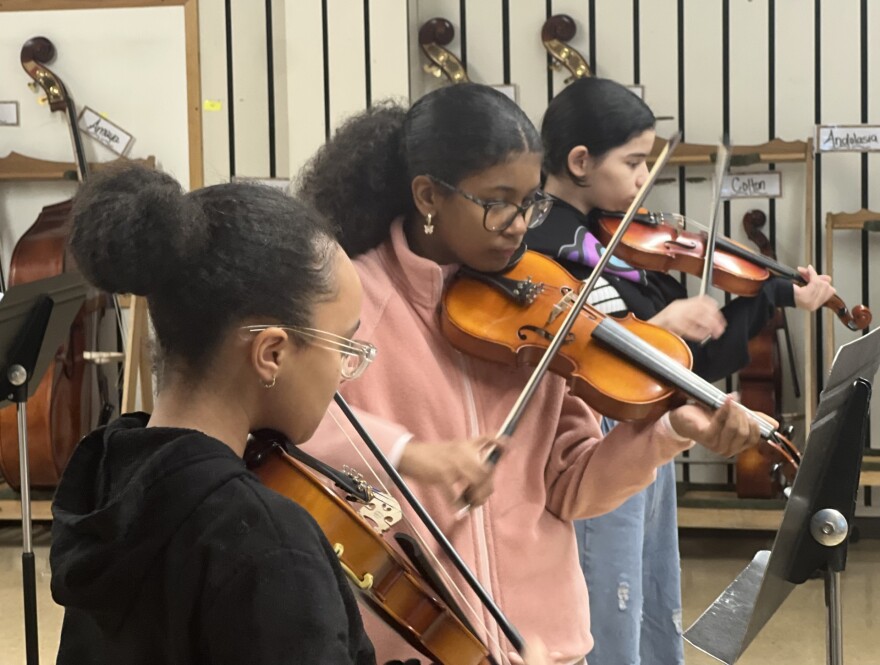ALLENTOWN, Pa. — When Annelis Orta Quinones is upset, she turns to her trumpet.
“It lifts up my spirit,” said Annelis, a seventh grader at Harrison-Morton Middle School.
“It also brings a lot of joy into my life because I love being in band,” the 12-year-old girl added. “It's a part of me.”
Students like Annelis have benefitted from Allentown School District’s commitment to bolstering its arts programming since Superintendent Carol Birks officially took the helm of the district in March 2023.
“Having access to the arts affords students opportunities to go beyond their just traditional academics,” Birks said.
Investing in the arts
In the last year and a half, ASD spent more than $1.4 million on new instruments and hired 34 educators to teach the related arts, which include band, choir and orchestra, as well as gym, health, cooking, Spanish and technology classes.
These are big investments in a district that cut much of its arts staff and programming back in the 2010-11 academic year.
At the time, public schools were poised to lose $1 billion in funding under new Republican Gov. Tom Corbett. Federal stimulus dollars ran out in 2011 and the state government didn’t work to make up the difference, according to regional and local reporting.
Nearly 15 years later, ASD is prioritizing the arts as an essential part of creating well-rounded students thanks to COVID-19 pandemic relief funding and recent boosts in state money allocated to public schools.
This new focus is keenly felt in the district’s middle-school music programs.
More staff, instruments in middle school
Harrison-Morton, Raub, South Mountain and Trexler middle schools have received more than 410 new instruments in total since the summer of 2023, according to school board documents.
“It gave kids the opportunity to make choices, instead of coming in and [it’s] like, ‘Well, this is what we have."Trexler Principal Bob Morrow
Trexler Principal Bob Morrow said these purchases have helped his school add more string instruments to their collection, as well as multiples of larger instruments, providing students with more options for which instruments they pursue.
“It gave kids the opportunity to make choices, instead of coming in and [it’s] like, ‘Well, this is what we have,’” he said.
Compared to 2023-24, the number of students in Trexler’s band has shot up by 68% with 119 students involved this school year.
Increased arts staffing has also had a significant effect at the middle-school level, where schools previously shared related-arts educators. A teacher would be at one middle school in the morning and another in the afternoon.
That system was an obstacle for educators’ ability to fully integrate themselves into each school’s community, said Raub Principal José Delgado.
“You don’t become assimilated to the culture,” he said. “You don’t get connected with the students and the families.”
Now, related-arts teachers are full-time staff members each serving at only one middle school.
The addition of more teachers provides students two related-arts classes each day instead of one, giving them further opportunities to explore their interests outside of core subjects.
Evanalyse Cevallos, 13, an eighth grader at South Mountain, said she enjoys learning singing techniques in the school’s choir.
“I feel like harmonizing gets me feeling happy,” she said.
Josh Colon-Hernandez, an eighth grader at Harrison-Morton, has played the clarinet for over a year in the school’s band, but recently decided to pick up the tenor saxophone, too.
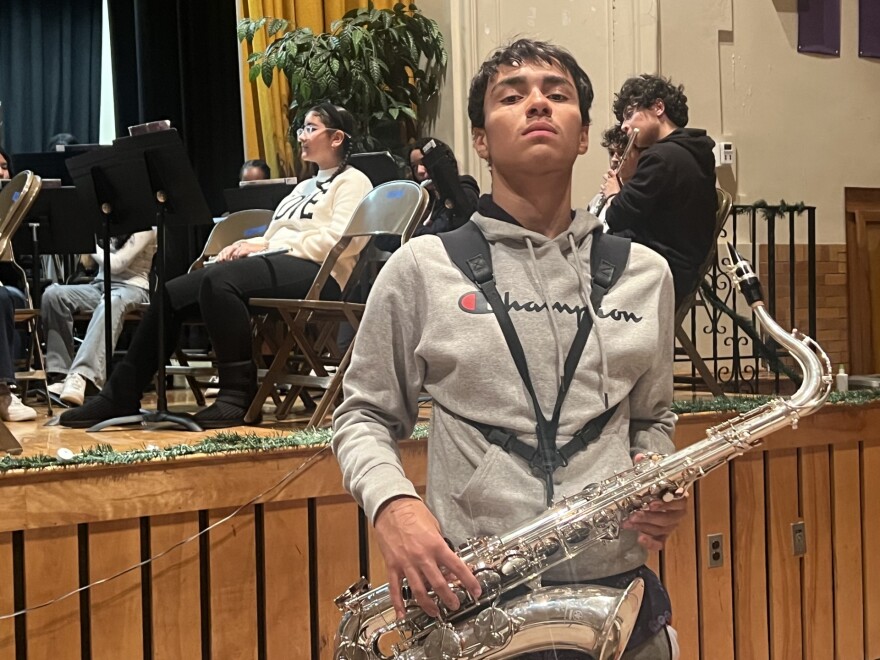
He was drawn to “those groovy beats,” he said. Josh, 14, has also gotten to practice conducting for his peers in the band.
“I'm more than a conductor to them,” he said. “I'm their friend that's going to help them excel.”
“That's why I do band – to help other people, but also to influence myself to learn.”
Additional arts periods for students have resulted in more prep periods for core content teachers, as well, allowing them extra time to plan, collaborate and receive professional development while their students are in arts classes, said Carolyn Hamilton, Harrison-Morton’s principal.
“I think it's a great help,” she said.
The benefits of an arts education
And the district doesn’t plan to stop uplifting the arts anytime soon.
ASD intends to hire three more secondary music teachers for next school year, including one at Trexler. At the high schools, ASD will offer six new music classes in 2025-26, including Music Production, Music Appreciation and Guitar & Strings I, among others.
Birks said the arts are a priority because they help students with critical thinking, logical reasoning, self-esteem and social-emotional wellness.
The superintendent traces her own achievements back to her time as a student in choir and theater programs, and she believes the arts can similarly lead Allentown students to success.
Arts programming helps students gain “developmental assets,” Birks said, which are a set of “40 research-based, positive experiences and qualities” that help students succeed in school and life, according to the Search Institute, a youth-focused research organization.
“Creative activities” and “youth programs” themselves are developmental assets, as well as when students have “adult role models,” “positive peer influence[s]” and a “caring school climate.”
Though the impact of an arts education is hard to measure quantitatively, there are some data available on its importance for students, especially for music education.
Over the years, studies have shown the arts can strengthen students’ literacy skills and vocabulary, according to a 2023 report from The New York Times.
The same report cited research from 2019 that found some elementary and middle school students benefited from increased arts education.
In the study, student groups saw improvements in writing, emotional skills, school engagement and aspirations for college, and some groups exhibited lower levels of disciplinary issues.
Past research has also shown music education in particular seems to strengthen students’ IQ while improving math and reading skills, according to a literature review in the same 2019 study.
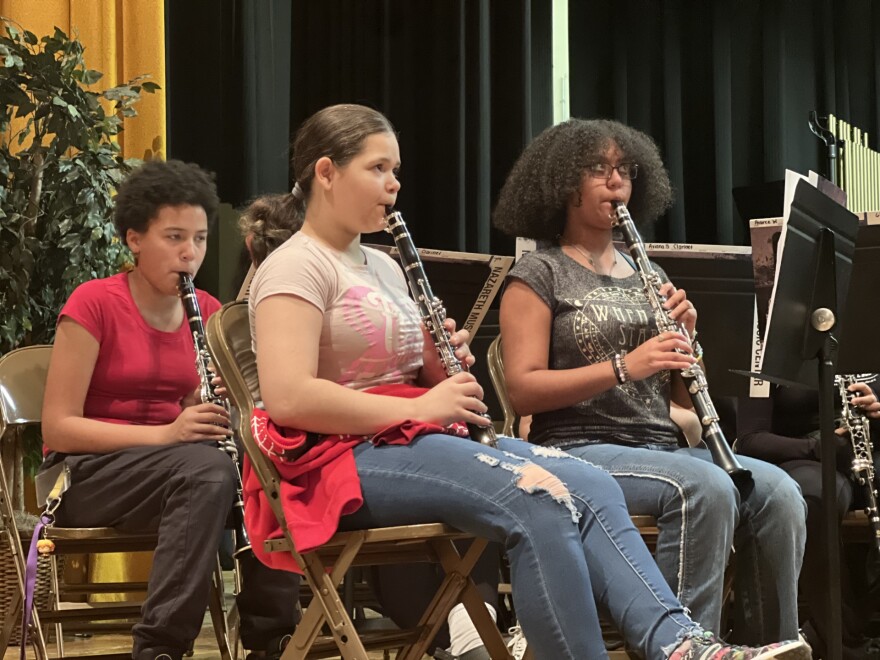
Positive outcomes in Allentown
Allentown educators have seen similar results in their own students, they said.
“Students who are involved in band, who are involved in choir, who are involved in art and music and those different things – [they] have fewer behavior issues, and they tend to be more motivated to work,” said Harrison-Morton's Hamilton.
For some students, their art classes give them a reason to come to school consistently.
“I have a lot of students [whose] attendance has drastically increased,” said Michaela Madaio, an instrumental music teacher at South Mountain.
“Especially with orchestra being in the morning, the students have to come to school then, and then they're here for the rest of the day to begin with,” she said.
“Let's face it: students love school, but they don't always love school for math,” Raub's Delgado added. “That's not every student."
“Let's face it: students love school, but they don't always love school for math. That's not every student."José Delgado, Raub Middle School Principal
Instead, students may enjoy school because they love their art teacher or singing in the choir, he said.
Delgado also said having more arts classes has helped get more Raub students involved in extracurricular activities after the school day ends.
Raub's clubs have 500 student members enrolled; that puts the unique number of students closer to 325 when accounting for students in multiple clubs, he said.
That’s a “huge” number, added Delgado, who’s been an educator in ASD for 25 years.
“That is a manifestation again of the offerings we have during the day,” he said. “You have more accessibility, you create more equity, you create more opportunity, you gain more interest — you have more kids in choir.”
Raub has seen a 49% increase in its choir participation compared to last school year. There are currently 113 students in the choir.
'It's not just all music'
ASD middle school teachers said their students gain non-musical skills from band, orchestra and choir, too.
Students learn about teamwork, leadership, problem solving, accountability and making good choices, which are skills they can apply to other areas of their lives, the teachers said.
“It's not just all music,” said Jessika Gross, instrumental music teacher and band director at Harrison-Morton. “It's building your inner person and your inner self, and it's a great experience for them.”
Oliver Rosa, choir director and general music teacher at South Mountain, said music classes also give students an opportunity to relax during the school day and learn about something fun, like the connection between the advent of jazz and the work of modern-day artists, such as singer Billie Eilish and rapper Kendrick Lamar.
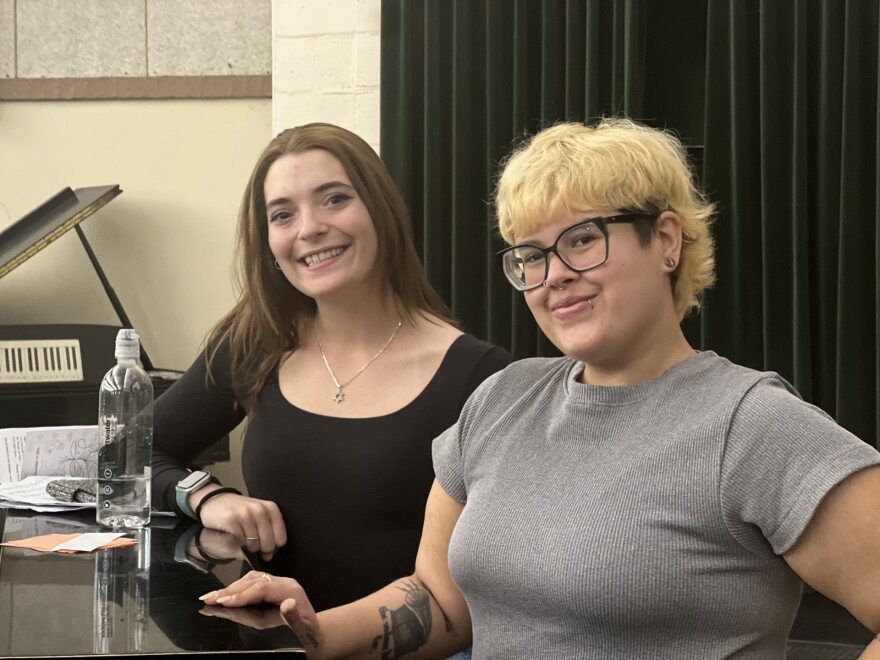
“In the other classes, it is very rigorous, and they’re always doing something that feels like something of wild importance,” Rosa said.
“Whereas in my class, we're talking about music and movies and how that affects the audience and different genres of music and how we got there.”
Rosie Rodriguez, an eighth grader at South Mountain, said music is “major relaxer” for her.
“If I get stressed out or overwhelmed – because I have a tendency to do that – I usually start singing or practicing my flute,” said Rosie, 13, a member of both the school’s choir and band.
“It really helps.”
Room to continue growth
Madaio, South Mountain’s band and orchestra director, said there are still ways ASD can strengthen its music programs moving forward to benefit more kids.
For one, she’s working on a proposal for an instrumental curriculum to streamline learning for students in fourth through 12th grades.
That way instrumental students across ASD would get taught the same foundational material, Madaio said.
Madaio also said it’s important to create orchestra classes for students who play string instruments, such as the violin or cello, to build their musical knowledge before playing alongside other instruments that are part of the band, such as the clarinet, saxophone and drums.
“They're two different pedagogies,” she explained.
“It's basically putting an English language learner in an English class without any support. That's what a string student in the band looks like.”
Most Allentown schools don’t have orchestra programs though. Instead, their string instrumentalists play in the band.
But last school year, Madaio created the district’s first school orchestra at South Mountain, and this year, Harrison-Morton followed suit, piloting its own orchestra program in recent months.
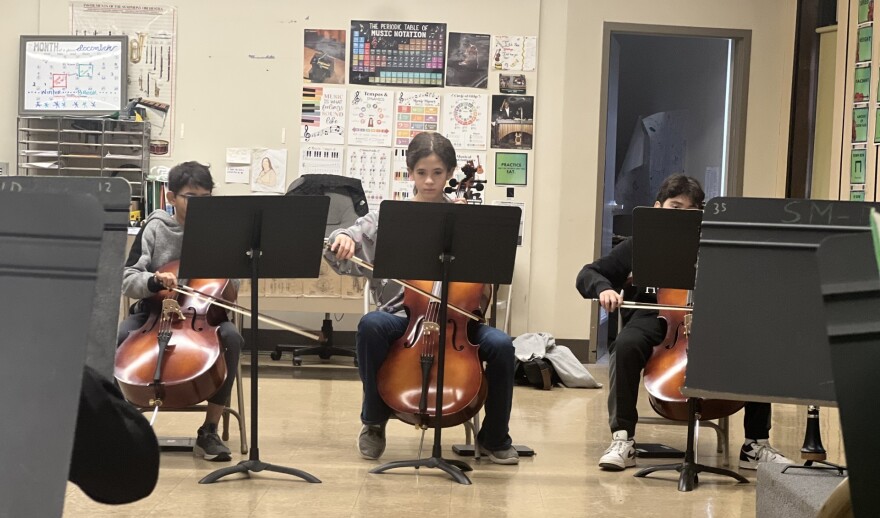
And though ASD has purchased nearly 4,900 instruments for all grade levels since 2023 – with about 700 of those going to secondary schools – Madaio said having even more instruments would help ASD’s music programs continue to grow.
At South Mountain, there’s 71 students in band and about 64 in orchestra, but both programs have waitlists, Madaio said.
With additional instruments, Madaio could teach more students like Zaidaliz Padilla how to play.
Zaidaliz, a sixth grader, took up the violin just this school year when she joined South Mountain’s orchestra.
“I wanted to start something new,” said Zaidaliz, 11. “I’m really excited because I’ve grown a lot since the first time I played the violin.”
Zaidaliz said her favorite parts of being in orchestra so far have been making new friends and creating music together.
“I just really like listening to music.”
Her fellow South Mountain violinist Isabella Datiz, 12, agrees.
“It’s pretty fun,” the sixth grader added. “You have [classes] all day, but then you go to music, and it’s different.”

